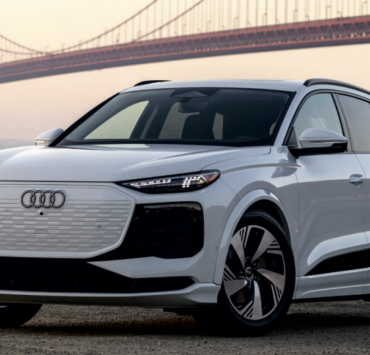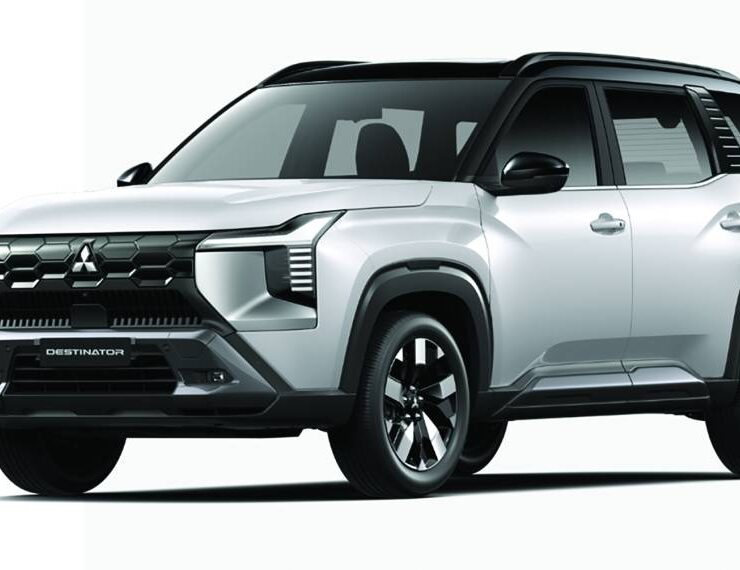2025 Land Rover Defender 110 D250: Nothing beats the original
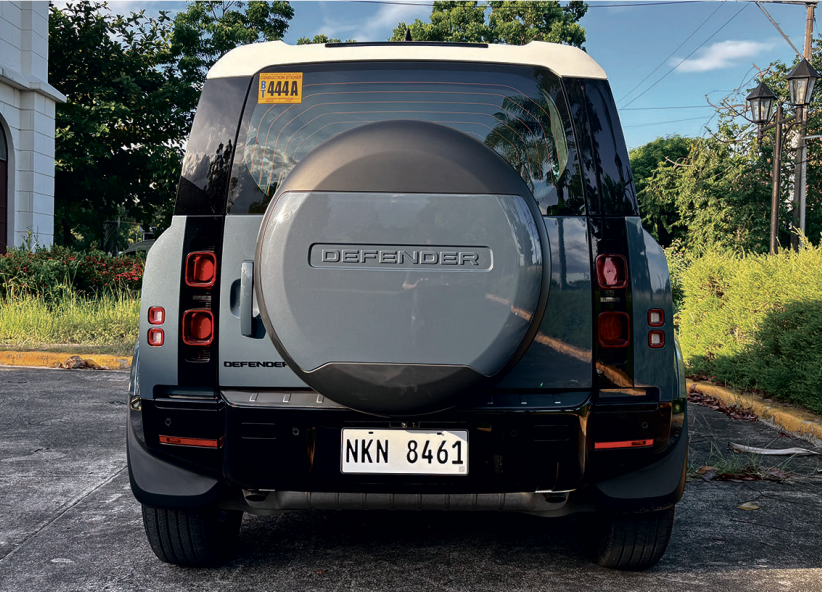
If you’ve ever bought pasalubong or eaten in a restaurant outside of Metro Manila, you often see “The Original” on boxes and signboards.
Being “da orig” appears on everything from buko pie to pancit Malabon, to (if your arteries can handle it) pares – that’s because Filipinos place great importance on those who are the first to set the standard in a certain field or product line.
In the automotive scene, the latest Land Rover Defender is such an original and exciting shape that it has spawned a bevy of imitators from around the world that are hoping to capture the British sport-utility vehicle’s (SUV) aesthetic magic at a more accessible price (look up the Jetour Terminator T2 as a very compelling example).
I have written at great length about the supreme capability of the Defender in muddy ruts and lahar-filled rivers. This time, we find out if this trailblazing off-roader is any good off the trail.
Style icon
The latest Defender L663, which was launched globally in 2020, carries over many of the utilitarian styling cues of the original Defender (which itself was based on an agricultural jeep design from 1948).
Powerful, circular LED headlights are housed in gloss-black rectangular shelves that also carry the turn indicators, reminiscent of the old Defender’s lighting arrangement. Other features like the simple front grill, huge ‘DEFENDER’ decal and optional protective hood cladding make this luxury SUV look tough yet sophisticated.
But it’s the Defender’s boxy silhouette that truly gives away its esteemed pedigree – incorporating a gently sloping windscreen, non-flush window glass, high beltline and familiar glass roof panels. The white roof is likewise a welcome change from what others do, while the 19-inch, split-spoke alloy wheels are color-matched to this test unit’s rich Tasman Blue paint.
At the rear is one prominent feature that has long disappeared from almost all modern SUVs: a rear-mounted spare tire, flanked by jewel-like LED taillights that are a modern take on the old Defender’s lights. This means that the rather hefty tailgate opens to the right to reveal a fairly small cargo area that can be expanded using the split-folding rear seats.
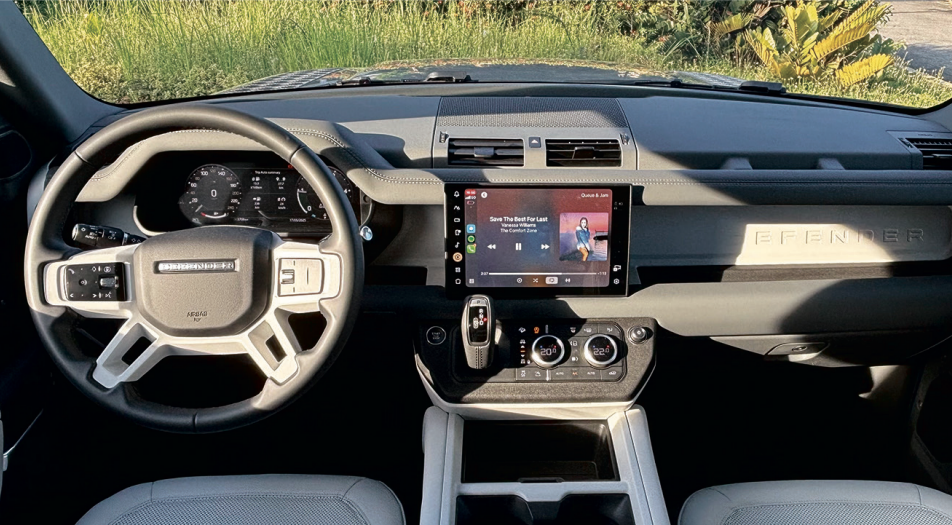
Hardy, vast cabin
Inside, the Defender 110’s vast five-seater cabin is made airier with the white-and-black color scheme specified in this test unit.
But although it may seem rather terrifying to muck up such a lovely interior, don’t fret – the Defender comes standard with Land Rover’s Resist upholstery, which is a leather-free option (something that would make my esteemed colleague Tessa Salazar happy), that the carmaker claims to be extremely durable and totally easy to clean.
Indeed, the inside of this SUV eschews the traditional wool carpeting and buttery-soft hide of other vehicles in this price range – you get hardy plastics, thick rubber mats and plenty of rubberized shelves and cubby holes to handle the toughest and dirtiest of trips.
But things like the 11.4-inch Pivi touchscreen infotainment system with wireless Apple CarPlay and Android Auto, highly supportive, part-electric front seats and interactive driver display remind you that this SUV costs more than some townhouses. However, I would like the ability to save all my settings, instead of having to do these every time I drive the car.
Finally, the standard dual-zone climate control system is one of the most powerful that I’ve ever tested, offering gale-force winds at whatever temperature you desire, while the clear 360-degree camera system that is such a boon off-road can be used to help you through the tightest spots in the city.
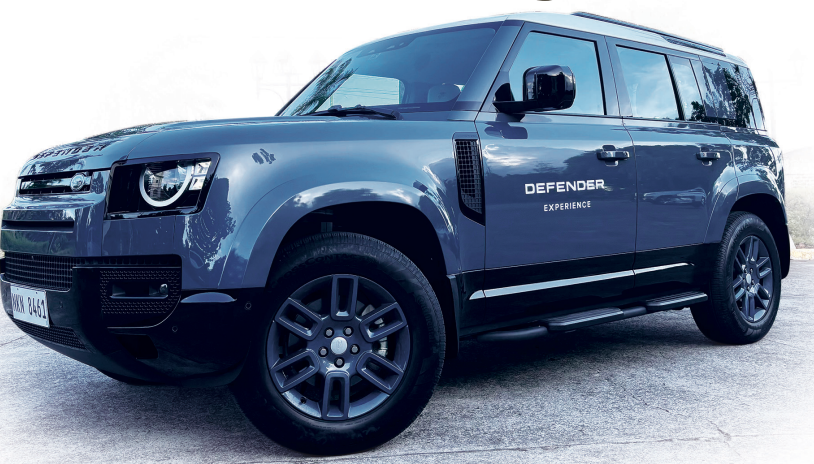
Sparkling performance
Old Defenders were a choice of either brawny V8 power or clattery turbodiesel punch.
Mercifully, the latest Defender lets you have your cake and eat it, too – under the hood is a twin-turbocharged 3.0-liter, twin-cam, 24-valve inline-6 diesel engine pumping out 246 horsepower and 600 Newton-meters of torque. This is mated to a responsive 8-speed automatic gearbox that could use a stronger creep function at very low speeds.
Besides having a linear powerband, Land Rover’s straight-six turbodiesel offers strong acceleration and a noise that is almost as pleasant as BMW’s oil burners. Fuel consumption is excellent for such a big 4×4 – we got 7 to 10 kilometers per liter in the city, and 15 to 18 kilometers per liter on the expressway.
All this performance is reined in by powerful brakes controlled by a nicely weighted pedal, as well as superb air suspension that minimizes the dramatic pitch and roll associated with heavy SUVs. Meanwhile, the light and responsive steering lacks feel, which can be rather alarming when driving the Defender at speed on winding roads.
Then again, this luxury SUV should easily keep you out of trouble – Land Rover Philippines has made the brilliant decision to make advanced driver assistance systems (ADAS) like adaptive cruise control and lane-departure warning standard in all Defenders, although these could use a bit more tuning for Philippine traffic conditions.
Frankly, all high-end car brands should follow Land Rover’s excellent initiative of offering ADAS as standard, especially with the eye-watering prices they charge their customers.
Often imitated, never duplicated
Overall, the 2025 Land Rover Defender 110 is a capacious and economical SUV that performs exceptionally on almost any terrain.
Unlike its rather agricultural predecessor, this latest iteration is brilliant off-road while being entirely pleasant on tarmac, all while offering total confidence when faced with the horrors of urban driving (potholes, flooding and more). It helps that this is all packaged in that imposing yet eye-catching body.
Although the easiest rebuttal to being “da orig” is to just offer a better product, the 2025 Land Rover Defender 110 is so capable and versatile that it remains totally unrivalled by both European luxury marques and mainstream Chinese wannabes.
It’s a clear case of being the original and, happily, still being the best.














